Located in the lush hills of eastern Kyoto, Kiyomizudera Temple, also known as the “Pure Water Temple,” is a peaceful haven that radiates serenity and spiritual solace. As a UNESCO World Heritage Site, it combines a fascinating history with stunning architecture, providing a perfect setting for cultural exploration and moments of peaceful reflection.
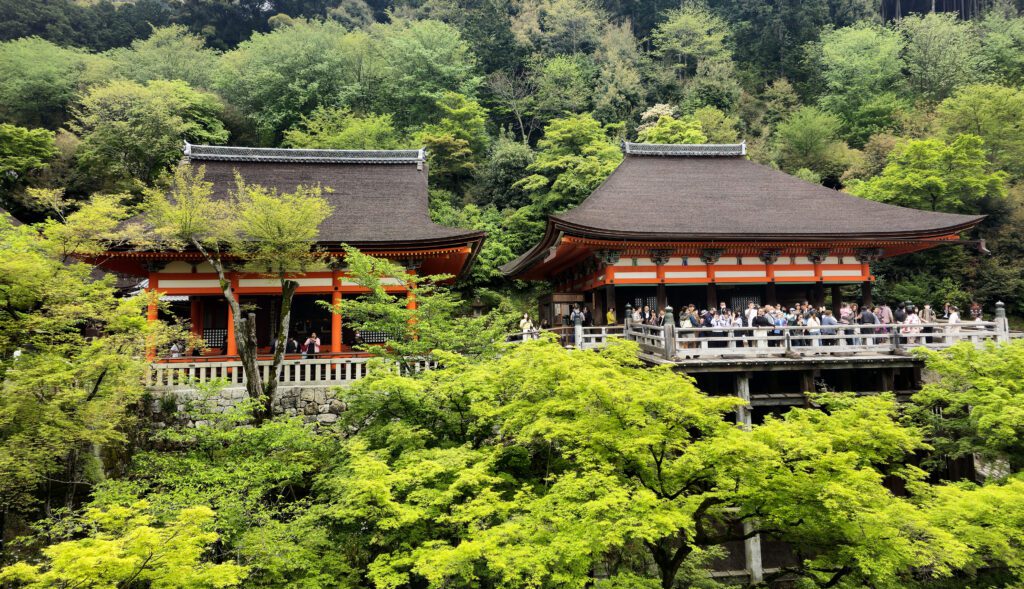
The history of Kiyomizudera temple
The Kiyomizudera Temple’s story begins in 778, during the early Heian period. It owes its existence to the Buddhist monk Enchin, who was inspired by a vision to seek out the Otawa Waterfall. The temple was named after this waterfall, with ‘Kiyomizu’ translating to ‘pure water’.
Over the centuries, despite numerous fires and wars, the temple’s spirit remained undeterred. Each reconstruction added a new layer to its rich tapestry of history, making it a significant centre for the Kannon Bodhisattva worship. The temple’s history of resilience makes it a symbol of perseverance, embodying the motto “to jump off the stage of Kiyomizudera“, which encourages one to face life’s challenges head-on.
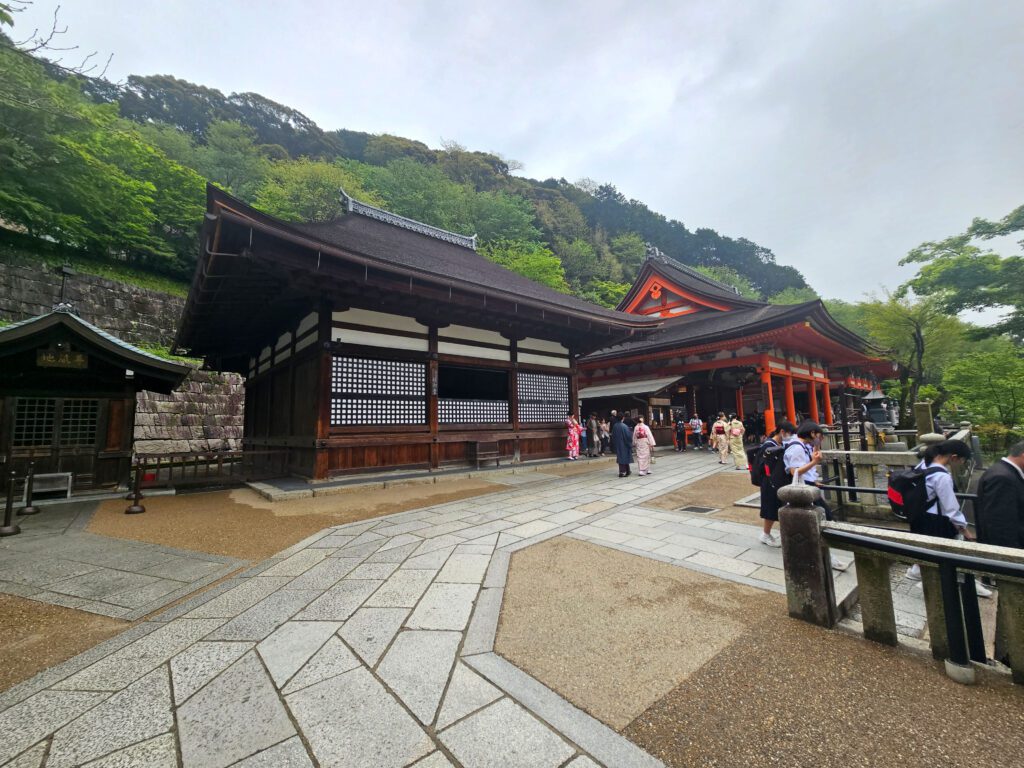
Architectural splendour
The Main Hall
The temple’s main hall, or Hondo, is a marvel of Japanese architecture. The architecture reflects the Hiyokezukuri style, characterized by its spacious and open design.
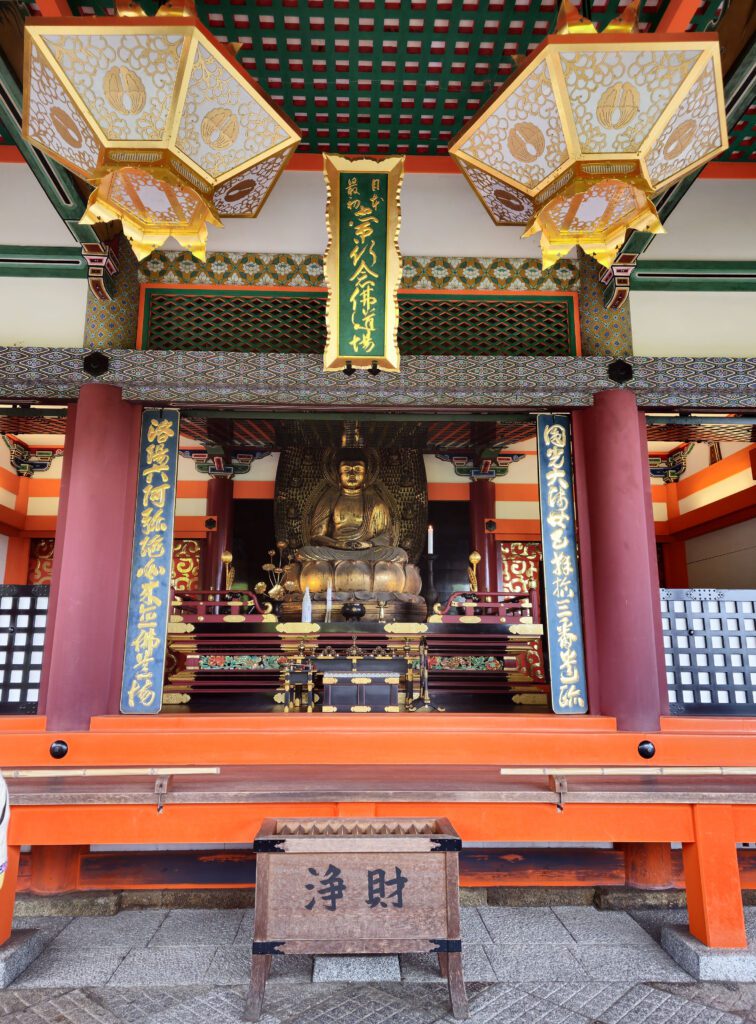
The Hondo features a spacious interior with a raised floor, allowing visitors to experience a sense of reverence as they enter the sacred space. The hall houses various Buddhist statues and artifacts, including the primary object of worship, a small statue of the eleven-faced, thousand-armed Kannon, the Bodhisattva of Compassion. This statue is considered a national treasure of Japan and is not usually accessible to the public, but it can be viewed during special occasions and ceremonies.
Kiyomizudera stage
The Kiyomizudera Stage is an iconic and breathtaking feature of the temple, captivating visitors with its magnificent structure and awe-inspiring location. Perched on wooden pillars, the stage extends out from the main hall, offering a panoramic view of the surrounding landscape.
The stage, known as “Kiyomizu-no-butai” in Japanese, stands at an impressive height of over 13 meters, supported by 139 sturdy wooden columns. What makes this architectural marvel truly remarkable is the fact that it was constructed entirely without the use of nails or any other metal fasteners. The intricate joinery techniques employed in its construction showcase the ingenuity and craftsmanship of the era.

Walking along the stage, one can’t help but be enthralled by the sense of suspended beauty and the harmonious integration of human creation with the natural environment. The stage overlooks a lush green valley, offering breathtaking vistas that change with the seasons. During spring, the surrounding cherry blossom trees create a vibrant pink canopy, while in autumn, the fiery hues of the maple trees paint a mesmerizing landscape.
The Kiyomizudera Stage not only serves as a viewing platform but also symbolizes a leap of faith. According to tradition, if one were to survive a jump from the stage and make a wish while doing so, their wish would be granted. However, such daring leaps are no longer allowed for obvious safety reasons.
Visitors to the Kiyomizudera Temple are drawn to the stage, not only for its architectural splendor but also for the unparalleled views it provides. Standing on the stage, one can marvel at the beauty of Kyoto, with the city spread out below and the distant mountains forming a majestic backdrop.
Okunoin Hall
At the back of the main hall, a trail leads to the Okunoin Hall, a smaller temple, tucked away nestled among trees. This hall is dedicated to Koyasu Kannon, the goddess of safe childbirth and child-rearing. The hall’s construction reflects the traditional architectural style of the Momoyama period.
Inside the Okunoin Hall, you can find statues of Buddha Shaka, the historical Buddha who achieved enlightenment and taught the path to liberation. The hall also showcases statues of Buddha Amida, associated with the Pure Land, a realm of enlightenment and rebirth.
The Okunoin Hall also has 200 Jizo statues, representing Jizo Bodhisattva known for caring and protecting people, especially children and travelers. Adorned with red bibs and caps, they serve as guardians, offering blessings and comfort to visitors.

The Okunoin Hall also features a balcony that offers a stunning view overlooking the main building of Kiyomizudera Temple. In fact, the best Kiyomizudera pictures are taken from this vantage point!
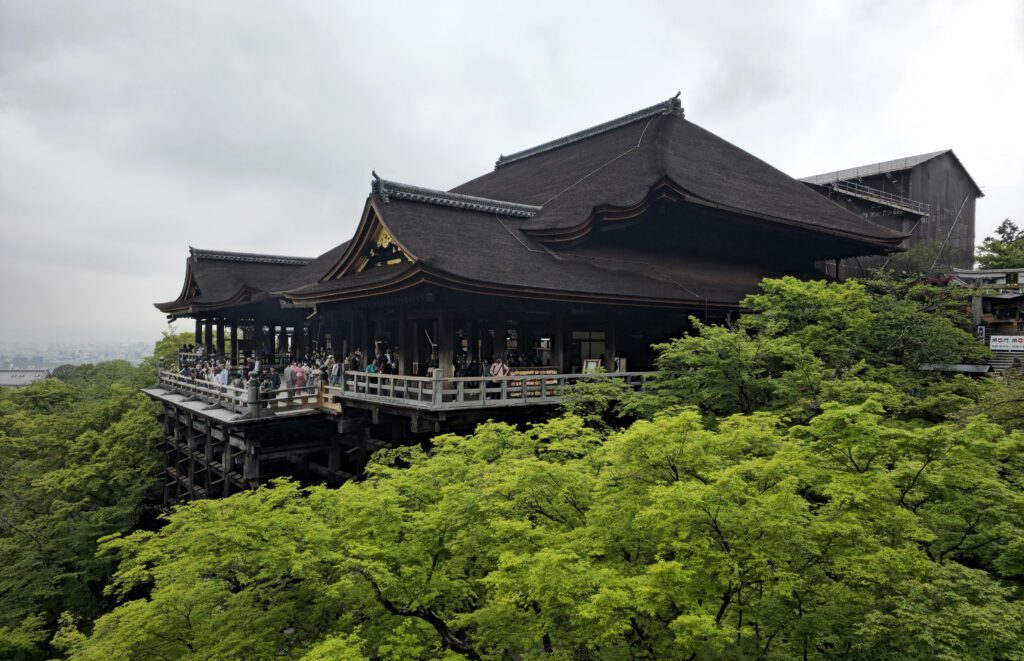
Otawa waterfall
The Otawa Waterfall is a natural wonder located within the grounds of Kiyomizudera Temple. This picturesque waterfall is an integral part of the temple complex and holds deep spiritual significance for visitors and worshippers.
Flowing from the nearby hills, the Otawa Waterfall cascades gracefully down a series of rock formations, creating a mesmerizing display of cascading water. The word “Otawa” translates to “Sound of the Big Stream,” and true to its name, the waterfall produces a soothing and melodic sound that adds to its enchanting ambiance.

One of the unique aspects of the Otawa Waterfall is its division into three separate streams. Each stream is believed to have different blessings associated with it. The first stream is said to bring longevity, the second stream offers success in academics or artistic pursuits, and the third stream grants a fulfilling love life. Visitors can use long-handled cups attached to poles to catch the pure and sacred water from these streams, symbolizing the desire for the specific blessings they represent.
Drinking the water from the Otawa Waterfall is considered a sacred act and is believed to bring good fortune and purification. It is a ritual that has been practiced for centuries, connecting people to the spiritual energy of the waterfall and invoking its blessings.
Koyasu Pagoda
Located a brief stroll away from the main hall stands the Koyasu Pagoda. Also known as the “Fertility Pagoda“, it is a destination for those seeking blessings for safe childbirth and healthy pregnancies.
Visitors and expectant parents often tie colorful strips of cloth, called omamori, to the surrounding trees or specially designated areas near the Koyasu Pagoda. These omamori are thought to possess protective and auspicious qualities, acting as a spiritual safeguard for the unborn child and the expectant mother.
The Koyasu Pagoda stands at a height of approximately 12 meters, featuring an elegant and slender design. Its white exterior, adorned with intricate carvings and decorative elements, exudes an air of tranquility and spiritual beauty. This pagoda embodies the essence of traditional Japanese architecture, showcasing the distinctive aesthetics of the Edo period.

Jinju shrine
Located just behind the main hall, the Jishu Shrine is dedicated to Okuninushi, a god of love and matchmaking. One notable feature of this shrine is the matchmaking pair of “love stones· or “Enmusubi Ishi”, placed 18 meters apart, which lovers try to walk between with their eyes closed. These stones are believed to have mystical powers and successfully navigating this path is said to bring luck in finding love.
Within the shrine grounds, you will also find designated areas or ema boards where visitors can write their heartfelt wishes related to love and relationships.
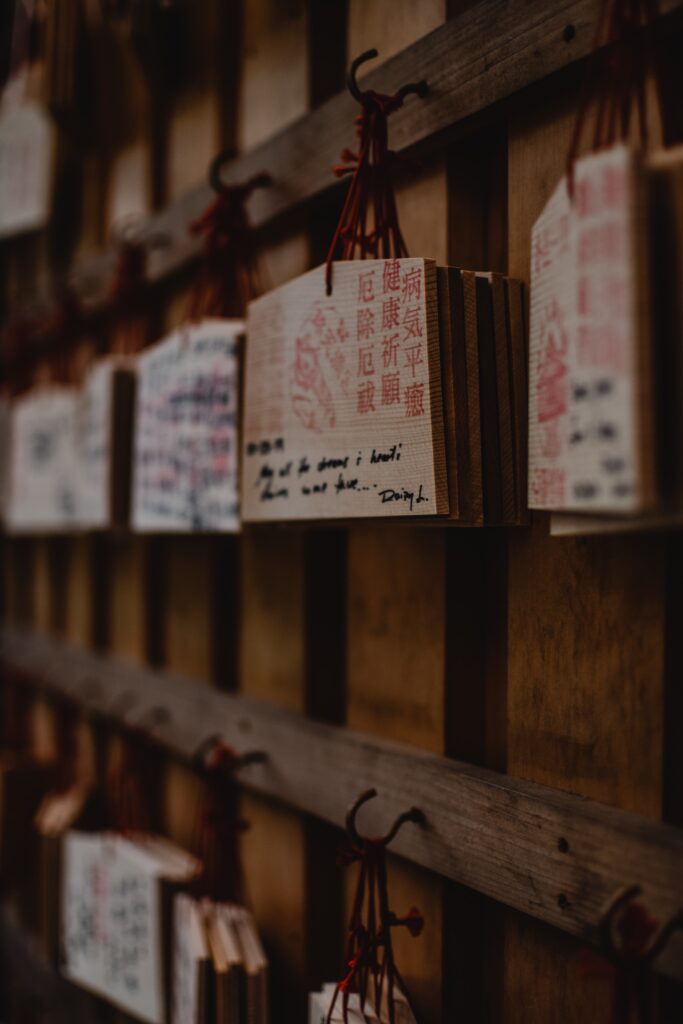
Accessing Kiyomizudera
The temple is accessible via bus from Kyoto Station, with the journey taking approximately 15 minutes. Alternatively, you can take the Keihan Railway Line to Kiyomizu-Gojo Station, followed by a 20-minute uphill walk. The temple is open from 6:00 am to 6:00 pm, with extended hours during the spring and autumn illumination events. The entrance fee is 400 yen for adults and 200 yen for children.
The charm of Kiyomizudera
Visiting Kiyomizudera is an experience that transcends the ordinary. The temple’s rich history, stunning architecture, and spiritual significance create a sense of tranquillity that is hard to put into words. As you step into this ancient temple, you’re not just exploring a monument; you’re journeying through time, witnessing the enduring spirit of Japanese culture and tradition.



